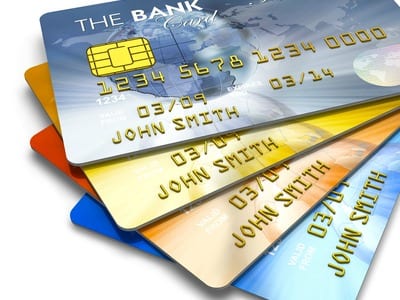Economists Debate Good News, Bad News of July Credit Report
Economists around the globe are crunching the latest G.19 credit numbers released by the Federal Reserve’s Board of Governors, numbers that show that consumers around the world are still borrowing money.
The panel’s July report, released earlier this week, shows an 8-percent increase in total consumer credit and an 11.25-percent increase in revolving credit. The report is issued monthly. The latest report counts borrowing through May 2012.
July Credit Card Usage Trends
- Overall consumer credit increased in May to $2.57 trillion, the largest amount of total debt since August 2008.
- Revolving credit – made up almost entirely of credit card debt – rose by $8 billion to $870.2 billion.
- Non-revolving credit – things such as student loans, and car, mobile home, boat and trailer loans – increased at an annual rate of 6.5 percent, to $1.7 trillion.
It can be argued that the report is open to wide-ranging interpretation.
Some economists looked at the numbers and saw a glass half-full – that the rise in credit-card use is a good sign. Consumers were feeling more confident about the economy in May as incomes increased slightly during the month and gas prices slid 6.8 percent (its largest one month decline since December 2008).
So they decided to take on more debt, charging more on their credit cards in May than in any month since November 2007. Bottoms up everyone.
Credit Card Usage Changes
Others saw the glass half empty, because they interpolated the Fed’s numbers with other statistics: The surge in credit card use is a bad sign, because according to an analysis published by First Data, a payment processing company, Americans are increasingly using credit to buy food and other necessities.
At the same time, their use of credit cards has dipped slightly for discretionary items like hotels, restaurants, clothing stores, etc. This suggests that cash-strapped consumers are borrowing to shop for what they need, and spending less on non-essentials they can’t afford.
Some looked at a different glass entirely: The surge in credit-card use is mainly the result of a major push by the card companies to entice consumers with cheap credit and by banks who want to wean their customers away from debit cards. Those older debit cards have fees attached to them that are capped by the Durbin Amendment, a provision of the Dodd-Frank financial reform bill.
And yet, some consumers don’t care about the glass at all. They may simply be using more credit cards because they like their convenience and efficiency; they appreciate their cards’ various rewards systems and how they can help record and track spending; and they would rather pay for everything, online and at once.
And if they pay off their balances in full each month, they’re getting all that service for free.
That, however, is the point of the Fed’s latest report. More and more people aren’t paying off their balances.
Sources:
- New, C. (2012, July 10). Credit Card Borrowing For Everyday Living Expenses On The Rise. Retrieved July 13, 2012, from http://www.huffingtonpost.com/2012/07/10/credit-card-borrowing-rise_n_1662630.html
- Dilworth, K.(2012, July 9). Fed report: Consumers Credit Card Balances Shoot Up in May. Retrieved July 13, 2012, from http://finance.yahoo.com/news/fed-report-consumers-credit-card-190000675.html
- The Federal Reserve. (2012, July 9). Consumer Credit - G.19. Retrieved July 13, 2012, from http://www.federalreserve.gov/RELEASES/g19/Current/
- First Data. (2012, June 11). Card Spending Growth Healthy in May, but Losing Steam. Retrieved July 13, 2012, from http://www.firstdata.com/en_us/about-first-data/media/press-releases/06_11_12.html
- Consumer Credit In May Sees Biggest Growth In Five Months. (2012, July 9). Reuters. Retrieved July 13, 2012, from http://www.huffingtonpost.com/2012/07/09/consumer-credit-may-2012_n_1659948.html?utm_hp_ref=money








